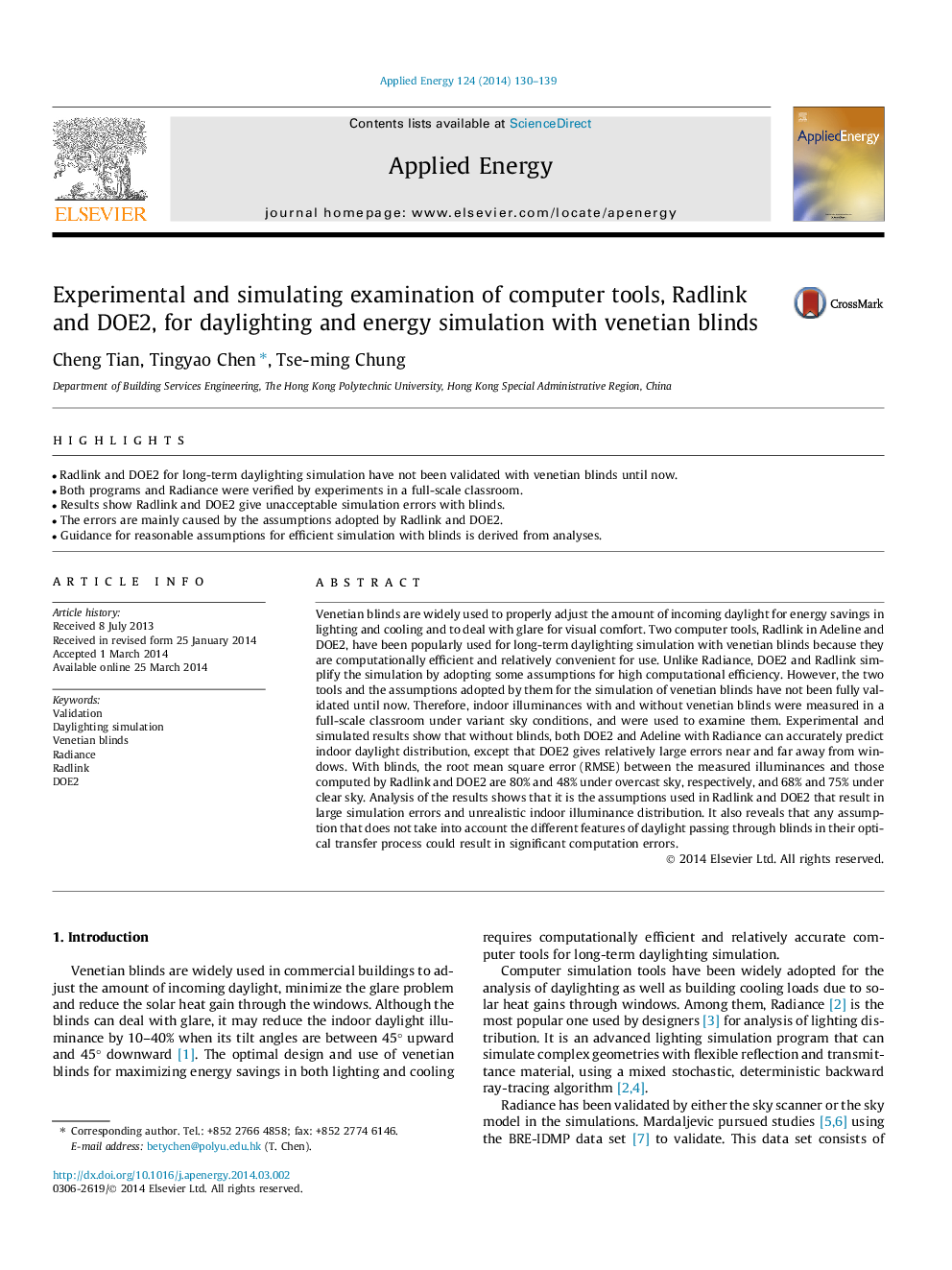| کد مقاله | کد نشریه | سال انتشار | مقاله انگلیسی | نسخه تمام متن |
|---|---|---|---|---|
| 242819 | 501903 | 2014 | 10 صفحه PDF | دانلود رایگان |

• Radlink and DOE2 for long-term daylighting simulation have not been validated with venetian blinds until now.
• Both programs and Radiance were verified by experiments in a full-scale classroom.
• Results show Radlink and DOE2 give unacceptable simulation errors with blinds.
• The errors are mainly caused by the assumptions adopted by Radlink and DOE2.
• Guidance for reasonable assumptions for efficient simulation with blinds is derived from analyses.
Venetian blinds are widely used to properly adjust the amount of incoming daylight for energy savings in lighting and cooling and to deal with glare for visual comfort. Two computer tools, Radlink in Adeline and DOE2, have been popularly used for long-term daylighting simulation with venetian blinds because they are computationally efficient and relatively convenient for use. Unlike Radiance, DOE2 and Radlink simplify the simulation by adopting some assumptions for high computational efficiency. However, the two tools and the assumptions adopted by them for the simulation of venetian blinds have not been fully validated until now. Therefore, indoor illuminances with and without venetian blinds were measured in a full-scale classroom under variant sky conditions, and were used to examine them. Experimental and simulated results show that without blinds, both DOE2 and Adeline with Radiance can accurately predict indoor daylight distribution, except that DOE2 gives relatively large errors near and far away from windows. With blinds, the root mean square error (RMSE) between the measured illuminances and those computed by Radlink and DOE2 are 80% and 48% under overcast sky, respectively, and 68% and 75% under clear sky. Analysis of the results shows that it is the assumptions used in Radlink and DOE2 that result in large simulation errors and unrealistic indoor illuminance distribution. It also reveals that any assumption that does not take into account the different features of daylight passing through blinds in their optical transfer process could result in significant computation errors.
Journal: Applied Energy - Volume 124, 1 July 2014, Pages 130–139